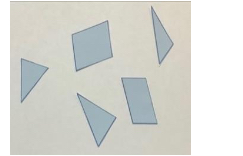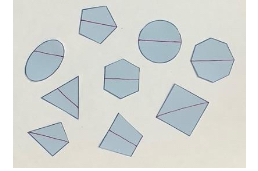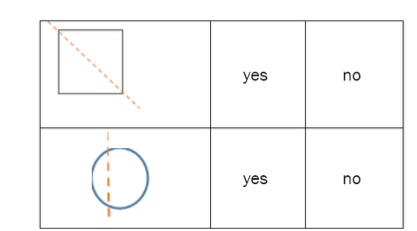General Information
Benchmark Instructional Guide
Connecting Benchmarks/Horizontal Alignment
Terms from the K-12 Glossary
- Hexagon
- Line of symmetry
- Pentagon
- Polygon
- Rectangle
- Square
- Triangle
Vertical Alignment
Previous Benchmarks
Next Benchmarks
Purpose and Instructional Strategies
The purpose of this benchmark is to introduce the concept of line symmetry in two-dimensional figures.- Instruction includes the idea that a line of symmetry decomposes a figure into mirror images.
- Instruction explores line symmetry through familiar figures such as triangles, rectangles, squares, pentagons, hexagons and octagons, but is not limited to polygons.
Common Misconceptions or Errors
- Students may assume a figure has the same number of lines of symmetry as sides or that a figure with more sides has more lines of symmetry.
- Students may assume all diagonals are lines of symmetry.
- Students may think two halves will always create a line of symmetry.
- Students may think all figures have a line of symmetry.
Strategies to Support Tiered Instruction
- Teachers provides instruction on why the lines shown on a rectangle and a parallelogram are not lines of symmetry and gives students die cut shapes. Students fold the paper along these lines to demonstrate the non-example. Teacher provides additional practice drawing lines of symmetry on two-dimensional figures and testing to see if each is a line of symmetry. Students may also record their work in writing on paper or in a journal.
- Example:

- Teacher provides mirrors and has students use the mirrors to determine if a line drawn is actually a line of symmetry.

- Teacher provides sheets of paper. Students fold paper shapes into two matching parts to identify lines of symmetry using only shapes that have them. Students may trace the lines of symmetry onto the unfolded paper.
- For example, teacher may ask, “Which shapes had lines of symmetry, and which did not? How do you know?”

- Teacher provides geoboards to students with six rubber bands. Teachers dictate which shape should be made on the geoboard and models the first line of symmetry. Students work with the rubber bands to find the rest of lines of symmetry. Students draw the examples on a piece of paper.
- Teacher provides sheets of paper. Students fold paper shapes into two matching parts to identify lines of symmetry. Include shapes that do not have lines of symmetry. Students trace the lines of symmetry onto the unfolded paper.
- For example, teacher asks, “Which shapes had lines of symmetry, and which did not? How do you know?”

- Teacher provides geoboards to students along with six rubber bands. The teacher makes a shape that has no line of symmetry on the geoboard. Students work with rubber bands to determine the lines of symmetry. Teacher engages in discussion with students about why they cannot find a line of symmetry.
- Teacher provides additional practice through a symmetry sort by preparing cards that each show a two-dimensional figure with a line drawn on the figure. Some show a line of symmetry while others do not. Students sort figures into those that show a line of symmetry and those that do not.
- For example, the teacher asks students to compare answers with a partner and reconcile any differences by tracing the figure and folding along its line.

- Teacher provides instruction on the concept of line symmetry. Using one shape, students are shown examples and non-examples of lines of symmetry, emphasizing that they divide a figure into two parts that are mirror images of each other. Teacher also provides students with paper shapes that can be folded along a given line to determine if the line is a line of symmetry.
Instructional Tasks
Instructional Task 1 (MTR.5.1)
Provide students with cutouts of various two-dimensional figures.- Part A. Show how a fold will or will not create a line of symmetry.
- Part B. Record your findings to identify patterns you notice about lines of symmetry in certain figures.
Instructional Items
Instructional Item 1
Look at the figures below. Choose yes or no to determine whether the line drawn is a line of symmetry?
*The strategies, tasks and items included in the B1G-M are examples and should not be considered comprehensive.
